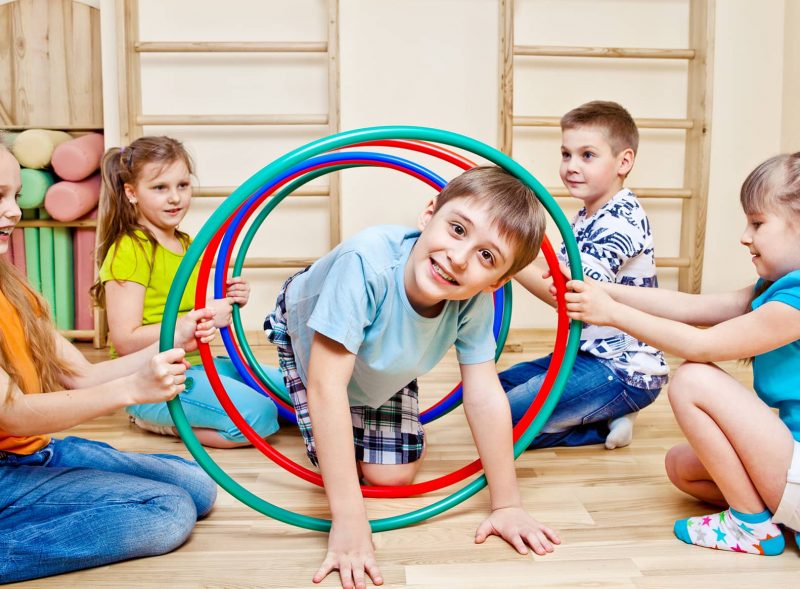Sensory diets to support arousal
Sensory diets are a structured list of sensory strategies which an individual can use throughout the day to help to support their arousal, attention and focus. They are commonly suggested as a support for individuals with sensory processing differences, including autistic children. This article will consider

Sensory diets to support arousal
Sensory diets are a structured list of sensory strategies which an individual can use throughout the day to help to support their arousal, attention and focus. They are commonly suggested as a support for individuals with sensory processing differences, including autistic children. This article will consider
What is a sensory diet?
A sensory diet is a list of sensory activities that child completes at certain points throughout the day to help to support their regulation. The sensory activities might include movement, a calm break, or a visual display. There are some examples below. Sensory diets are designed to be a proactive strategy that helps regulation throughout the day.
A history of the sensory diet
The concept of a Sensory Diet was first officially published by Patricia Willbarger in 1995 in an article by the American Occupation Therapy Association. A the same time occupational therapists Mary Williams and Sherry Shellenberger explored the idea of using sensory strategies to support regulation in their book How Does Your Engine Run?
The authors suggested that our bodies need sensations in the same way they need food. Sensations can help to both increase and decrease arousal. At its simplest, arousal is how awake or alert or how tired you are. It supports attention and focus. I explore arousal further here in this post – Arousal, Attention and Sensory Processing.
Sensory inputs can help to support arousal. For example, if your energy is low, going for a walk, or having a coffee, can help to increase your arousal. Or, if you’re stressed and your arousal is high, yoga or a hot drink might help to calm you down.
Sensory diets are way to structure the sensory inputs and help to support the child’s arousal across the day. Each one should be unique to the individual child. They should ideally be created after an assessment by an occupational therapist, however I appreciate this is not always possible.
What does a sensory diet look like?
A traditional sensory diet will include a timetabled list of activities to be used throughout the day. They will include a mix of sensory strategies which help to support the individual’s arousal. Traditionally they also included allocated time-slots for activities. For example, the movement break might occur at 9am, 11am and 1pm.

Mia’s story
Mia is easily overloaded by both noise and touch sensory information. She finds school activities like PE and assembly quite tricky as they are loud. She wears ear defenders, but these only help so much. A sensory diet could be used throughout the day to help to support her arousal.
Mia’s sensory diet might look like this
Breakfast – Mia drinks her milkshake through a straw and she always has chewy bread, her mother alternates between bagels and sourdough.
Getting dressed – Mia’s mum usually does a foot and hand massage when she gets dressed. If there is time they will also do a big squash where she lies between her beanbags. This provides touch pressure which supports calming.
Arrival at school – When Mia arrives at school she has ten minutes to sit and watch the fish tank or do a puzzle or read a book in a quiet corner.
At 10, 12 and 2pm – Mia completes her resistance band activities with her teaching assistant.
Arriving at home – Mia has 10-20 minutes to chill out with her soft toys in the space her parents made under her bunk beds. This space is dark and quiet. Or, she does a 10-20 minute yoga video.
Before bed – Mia’s parents give her another beanbag squash and massage before she goes to sleep.
Tailoring sensory diets to individual children
Sensory diets should support arousal. They should help children to be able to maintain the energy level required for the activity or task. This will be different depending on the activity, as some activities require higher energy levels than others. For example, running around the playground is usually more alerting than sitting in the book corner reading. To tailor sensory diets for individual children, you need to be aware of their individual needs, triggers and preferences.
What is included in the sensory diet?
This is completely different, depending on the child and also the resources you have! The first thing you need to consider is the child’s needs. Then, you need to consider the resources and space you have. It will also be important to think about the supervision you can provide to the child as this will dictate which activities will be safe to include. Some children will also need support to regulate and therefore will need an adult to co-regulate.
Some children will need activities that support down regulation. Other children will need more alerting activities. Some children might need a combination of the two to help them to get organised. I explore how to identify different children’s needs in Levels 2 and 3 of my Sensory Aware training. This training also covers precautions and risks to consider when using sensory supports.
Movement
Movement is one strategy that is frequently included in sensory diets. This could be set up in a sensory circuit. It could be a movement break. Or, it might be a video. There’s a number of movement break videos on the GriffinOT YouTube channel.
Calming down
Heavy work is one support strategy that is often included to help children to calm down. Touch pressure can be very regulating for some children. Breathing and/or yoga is another strategy many children find calming. There’s a number of calming videos on the GriffinOT YouTube channel.
Example sensory diet videos

James – sensory seeking
James is a classic sensory seeker. He is constantly on the go. However, his movement doesn’t always organise him very well. He loves being upside down and his parents have always said that he is very busy. His teachers use his sensory diet to help him to be more settled and focused in class.
James’ sensory diet
Before school – James spends ten minutes on his trampoline or using his Wii fit before breakfast. He also cycles to school in the morning.
9:00 – James takes the register book to the office
9:30 – James completes a sensory circuit between the morning lessons
11:30 – James completes a sensory circuit between the mid-morning lessons
2:00 – James joins in the PE warm-up with the class in the hall
James’ teachers also ensure that he never misses break and lunch time play as these are additional opportunities for him to move. He is allowed on the play structure every day to climb.
He also cycles home and often his parents stop at the park as well. They also let him spend time on the trampoline or Wii-Fit before they expect him to sit and do his homework.
He swims twice a week and also goes climbing and to karate once a week.
** Please note these are examples only and should not be used as a sensory diet for a student.
Every child is an individual and will need their own plan. It is also useful to have flexibility as it’s rare that days ever go 100% according to plan.
How do I create a sensory diet?
Occupational therapists will typically complete a sensory profile and assessment to determine what will be the best supports for an individual’s sensory diet. They will work with the child, their family and their teachers to determine what will be the best supports to put in place. This will vary depending on the individual’s needs and also the environment and equipment that is available. There is no one size fits all and everyone’s needs are different.
Parents
If you are reading this article as a parent in the UK, I can complete an online sensory profile to help you to understand your child’s sensory needs. More information is available on the sensory assessments page. If you are outside of the UK, you may wish to contact a local occupational therapist for support.
Training for sensory diets
To be able to create successful sensory diets, it is important that you understand the senses, regulation and sensory response types. My online training covers each of these topics in short easy to digest videos. There are worksheets which will help you to understand the needs of your own children so you are confident in choosing the best sensory supports for them. The fully training considers precautions and risks. If you want to deepen your understanding, you can also join my monthly group coaching.
Books
The following books have great information which can be used to help to create and implement a sensory diet:
- Success with Sensory Supports – Kim Griffin – more information here
- A Buffet of Sensory Interventions: Solutions for Middle and High School Students with Autism Spectrum Disorders – Susan Culp
- The Kids’ Guide to Staying Awesome and In Control: Simple Stuff to Help Children Regulate their Emotions and Senses – Lauren Brunker
- The Out-of-Sync Child: Recognizing and Coping with Sensory Processing Disorder – Carol Stock Kranowitz.
Problems with sensory diets
Sensory diets are a good way to introduce the idea of supporting arousal. However, in reality they can be restrictive. It may be that the individual needs support at 9am, but their sensory diet doesn’t have a slot until 10am. Or, that they are working really well and attending at 10am so may not need the strategy at that time.
The ultimate aim is to help the individual to regulate sufficiently to be able to participate. So, prescriptive sensory diets may not be reactive enough or flexible enough to support regulation in the real world.
You can consider a sensory lifestyle instead of a sensory diet!
There is more of a shift toward thinking about a sensory lifestyle. This means thinking about how to embed sensory regulation strategies through the individuals’ day, week, and month. It means making lifestyle changes which automatically include supports. The sensory opportunities are automatically embedded throughout the day.
Sensory Activity Schedules
Another way to structure the use of sensory supports is by using a sensory activity schedule. This structure has been created by Christine Mills throughout her PhD project. Sensory activity schedules include the same type of activities in sensory diets. The primary different when the sensory supports are schedules to be used. Sensory activity schedules link the activities to when a specific task or activity occurs, rather than to a specific time of day.
This is a really helpful structure to use when timetables change through the day. For example, if the child struggles with maths, their sensory activities happen before and after maths to support regulation through this lesson. Or, if the child finds PE dysregulating but it only occurs 1-2 times a week, they use their sensory activities on the days that PE happens.
A final thing to consider
It’s also helpful to have a quick support that can be used at unexpected times, as the world is unpredictable and things don’t always go to plan. So, find one or two things that can help to quickly increase or decrease the individuals’ energy at times when it might be needed. Have them in your back pocket just in case!



